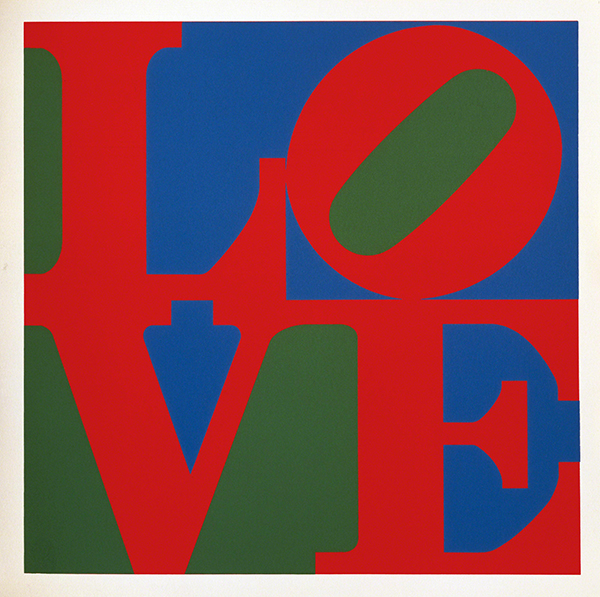Pride Month 2021 V: Robert Indiana
The artwork I’m featuring today is one of the most plagiarized works of art, created before stricter copyright laws were enacted in 1978. Although the original format from 1964 was inspired by American popular culture, Robert Indiana transformed his imagery into an ode to his partner since 1956, artist Ellsworth Kelly (1923–2015), who had mentored Indiana in the 1950s. Indiana used the pure, unmodulated bright colors of Kelly’s artworks in a Hard Edge style, which were a hidden “love letter” to Kelly.
 |
| Robert Indiana (1928–2018, U.S.), LOVE, 1967. Screenprint on paper, 34" x 34" (86.3 x 86.3 cm). Courtesy of the Museum of Modern Art, New York. © 2021 Morgan Art Foundation, Ltd/Artists Rights Society (ARS), New York. (MOMA-P3147inars) |
Indiana established himself as a Pop Art icon with his series of paintings and sculptures of single words, such as “ART” and “LOVE.” His "LOVE" series was related to the hippie use of the word to protest the Vietnam War (1955–1975). Words in his paintings—eat, die, err, hug—all relate to mundanities of American life.
Thus, in contrast to other Pop artists, Indiana’s work often takes on moralistic overtones. At the same time, his decorative and (on the surface) superficial use of the printed word paralleled the contemporary art movement Conceptualism. Indiana's works, however, did not pretend to mine such profundities put forth in most Conceptual works.
The original inspiration for "LOVE," according to the artist, was the colors of the Phillips 66 gas station—a red and green sign against the blue sky of Indiana—where his father worked during the Great Depression (1929–1940). The word itself was a memory of a sign with the words "God is Love” in the Christian Science church in which he grew up.
Indiana was born Robert Clark in New Castle, Indiana. He adopted the name of his home state early in his career. Growing up in a rural midwestern town, highway signs and billboards were a significant influence on him from a young age. He studied art at the Herron School of Art in Indianapolis and then the Munson-Williams-Proctor Institute in Utica, New York. In 1953 he earned a degree from the School of the Art Institute of Chicago. From 1954 to 1956, he studied at Edinburgh College of Art in Scotland.
Indiana moved to New York in 1956 at the height of the craze for Abstract Expressionism, initially interacting with the Color Field painters of the movement. His early works, however, were inspired by traffic signs, commercial stencils, and business signage. Indiana could be considered an heir to the early-1900s American art movement Precisionism, in which painters explored elements of American culture in close, sharp focus. He was particularly influenced by the Precisionist painter Charles Demuth (1883–1935) and his painting I Saw the Figure 5 in Gold (1928, Metropolitan Museum of Art, New York).
Correlations to Davis programs: Explorations in Art 1E: 6.35–6.36; Explorations in Art 2E: 6.9; A Community Connection 2E: 8.4; Experience Painting: Chapter 1; Discovering Art History 4E: 17.2


Comments